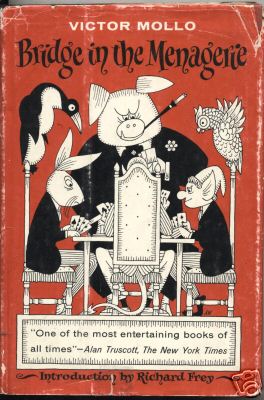Truth, they say, is stranger than fiction. I was dealt the following hand in a challenge match. While I did not make the ambitious SIX SPADE contract despite negotiating trump for one loser, post-mortem analysis showed how I could make it. The slam is cold on any lead.
The lead was the Jack of hearts. I won in hand, and planned to take two spade finesses. It would be nice not to be missing the spade nine but I had to hope for the best. I advance the Q, covered King and ace. I returned to hand in diamonds and played a second spade up. I guessed to put in the 8 and breathed my first sigh of relief. RHO returned a diamond.
The rest is analysis. I now needed to tread a narrow path, Winning, I need to ruff a diamond and in the following diagrammed position, draw West's last trump. East is squeezed in three suits, (in clubs in a overtaking entry squeeze)
On the ten of spades, East cannot weaken a red suit. A diamond pitch sets up a twelfth trick at once. A heart pitch allows, HA Hruff, setting up long H with Club entry to enjoy the established heart. So East pitches a club. However, declarer now plays CK and CQ and noticing the fall of the J and the T which were made tight, declarer OVERTAKES the CQ with the Ace (see third diagram postion) and advances the now good C9 (this is not a extra 12th trick but a entry creating measure) throwing a heart and THEN playing the last free winner the trump simple squeezing East in the last diagrammed position




